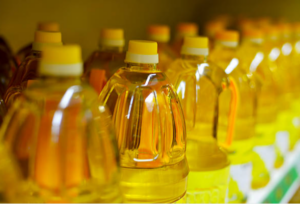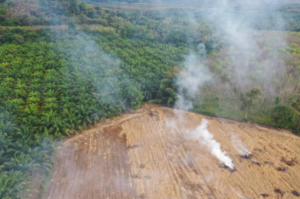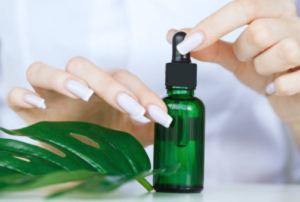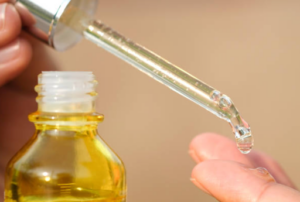Exploring the Sustainability Debate

Palm oil. It’s a ubiquitous ingredient lurking in countless beauty products lining drugstore shelves and luxury counters alike. But this versatile oil, prized for its creamy texture and long shelf life, has become a source of intense debate. Is it a sustainable, versatile wonder or an environmental villain contributing to deforestation and endangering wildlife?
Let’s delve into the complex world of palm oil and explore its impact on the beauty industry and the environment.
The Allure of Palm Oil
Palm oil boasts a unique combination of properties that make it a darling of the beauty industry. It’s:
- Highly Stable: Products with palm oil have a longer shelf life, reducing waste.
- Versatile: It works as a thickener, emollient (softening agent), and cleansing agent, offering a one-stop shop for many formulations.
- Cost-Effective: Compared to other plant-based oils, palm oil offers affordability.
These characteristics translate to a wider range of accessible beauty products, from creamy cleansers to luxurious hair masks.
Palm oil’s popularity in the beauty industry stems from its unique combination of properties that enhance product performance and consumer experience. Here’s a deeper dive into its benefits:
- Rich and Creamy Textures: Palm oil boasts a high melting point, offering a thicker, more luxurious feel to creams, lotions, and body butters. This luxurious texture is often associated with high-quality beauty products.
- Superior Emollient Properties: Emollients soften and soothe the skin, preventing dryness and irritation. This oil is a natural emollient, effectively locking in moisture and leaving the skin feeling smooth and supple. This property is crucial for a wide range of skincare products, particularly those formulated for dry or sensitive skin.
- Effective Cleansing: Certain palm oil derivatives act as natural surfactants, creating a gentle lather in cleansers and shampoos. These surfactants help lift dirt, oil, and impurities without stripping the skin’s natural moisture barrier. This makes them ideal for formulating cleansing products that are both effective and gentle.
- Long Shelf Life: Palm oil’s natural oxidative stability contributes to a longer shelf life for beauty products. This reduces the risk of products spoiling prematurely and minimizes waste. This benefit is particularly important for manufacturers and consumers alike.
- Natural and Versatile: Consumers increasingly seek natural ingredients in their beauty products. Palm oil, being a plant-based oil, fits this preference. Additionally, its versatility allows it to be used in a wide range of products, from cleansers and moisturizers to lipsticks and mascaras.
- Cost-Effective: Compared to other natural and organic oils, this oil is a more affordable option. This affordability allows brands to create high-quality products at accessible price points, making them more inclusive for a wider range of consumers.
Let’s explore some specific ways palm oil benefits different beauty product categories:
- Skincare: The oil derivatives are commonly found in facial cleansers, moisturizers, serums, and masks. They contribute to a luxurious texture, enhance product spreadability, and offer long-lasting hydration.
- Haircare: Shampoos and conditioners often utilize palm oil derivatives for their cleansing and conditioning properties. They effectively remove dirt and oil without stripping natural oils, leaving hair smooth and manageable.
- Makeup: Palm oil derivatives can be found in lipsticks, foundations, and mascaras. They contribute to a creamy texture, improve product wearability, and enhance color payoff.
It’s undeniable that palm oil offers significant benefits to the beauty industry. However, it’s crucial to acknowledge the environmental concerns associated with its production. Finding a balance between utilizing oil’s advantages and ensuring sustainable practices is key to a responsible beauty future.

The Shadow Side: Environmental Concerns
Palm oil’s undeniable benefits in the beauty industry come at a significant environmental cost. Here’s a deeper look at the concerning aspects of its production:
Deforestation and Habitat Loss: The surging demand for palm oil has fueled the clearing of vast swathes of rainforests, particularly in Southeast Asia. These rainforests are vital ecosystems teeming with biodiversity. Deforestation not only destroys the habitat of countless species, including endangered orangutans, elephants, and tigers, but also disrupts delicate ecological balances.
Biodiversity Loss: Rainforests are irreplaceable treasure troves of life. Deforestation for oil plantations leads to the displacement and extinction of countless plant and animal species. This loss of biodiversity disrupts entire ecosystems, impacting everything from pollination to nutrient cycling. The ripple effects can be immense and far-reaching.
Soil Degradation: Intensive palm oil production often relies on practices that deplete soil nutrients. These practices include heavy machinery usage, monoculture farming (planting only one type of crop), and excessive reliance on chemical fertilizers. Over time, this leads to soil erosion and reduced fertility, making it difficult to sustain long-term production without further deforestation.
Greenhouse Gas Emissions: Deforestation for palm oil plantations releases significant amounts of carbon dioxide stored in trees and peatlands. This contributes to climate change and global warming, further impacting ecosystems around the world. Fires used to clear land can exacerbate the issue, releasing even more greenhouse gasses.
Air and Water Pollution: Land clearing for palm oil plantations often involves burning, releasing harmful pollutants into the air. Additionally, palm oil processing can lead to water pollution through the use of chemicals and the generation of wastewater. These pollutants can harm human health and disrupt aquatic ecosystems.
Loss of Livelihoods: The conversion of land for oil plantations can displace indigenous communities who rely on the rainforest for their livelihood and cultural practices. This can lead to social conflicts and economic hardship for these communities.
The scale of palm oil production and its environmental impact is staggering. According to the World Wildlife Fund (WWF), oil plantations are responsible for an estimated 8% of global deforestation. This translates to a loss of rainforest habitat the size of a football field every 25 seconds.

The Beauty Industry Responds
The beauty industry faces increasing pressure to address the environmental concerns surrounding palm oil. In response, various approaches are emerging, each with its own strengths and limitations. Here’s a closer look:
- Sustainable Sourcing with Certifications:
The Roundtable on Sustainable Palm Oil (RSPO): This multi-stakeholder organization has established a certification scheme to promote responsible palm oil production practices. RSPO-certified palm oil comes from plantations adhering to environmental and social safeguards, such as protecting rainforests and respecting indigenous rights. While a significant step, some criticize the RSPO certification as not stringent enough. Concerns include the potential for “leakage” (mixing certified and uncertified palm oil in the supply chain) and the continued deforestation within certified areas.
Other Certification Schemes: Several other certification schemes have emerged, often with stricter criteria than the RSPO. These include the Forest Stewardship Council (FSC) and the Fairtrade Foundation. However, these certifications are currently less prevalent in the beauty industry.
- Palm-Oil-Free Formulations:
A Growing Trend: Recognizing the limitations of current certification systems, many brands are opting to eliminate oil altogether. This approach ensures complete avoidance of deforestation risks associated with palm oil production. It also resonates with consumers seeking palm-free beauty products.
Challenges and Considerations: Finding suitable oil alternatives may require reformulating products. Some potential replacements, such as shea butter or cocoa butter, may be more expensive or have limitations in terms of functionality.
- Transparency and Traceability:
Shine a Light on the Supply Chain: Consumers are demanding greater transparency from brands regarding their oil usage and sourcing practices. This includes disclosing the percentage of palm oil used, the origin of the palm oil, and whether it’s certified sustainable. Increased transparency allows consumers to make informed choices and hold brands accountable.
Challenges and Considerations: Mapping a complex supply chain can be challenging for brands. However, working with reputable palm oil suppliers and investing in robust traceability systems is crucial for transparency.
- Advocacy and Collaboration:
Industry-Wide Solutions: The oil issue is complex and requires industry-wide collaboration. Leading beauty brands are partnering with NGOs and sustainability organizations to advocate for stronger regulations, promote responsible sourcing practices, and support innovation in palm oil alternatives.
The Power of Collective Action: By working together, the beauty industry can create a more sustainable future for palm oil production. This collective action can influence policy changes and drive investment in research and development of sustainable alternatives.

What Can You Do as a Conscious Consumer?
Armed with this knowledge, you can make informed choices as a beauty consumer:
- Look for the RSPO Label: Support brands that use certified sustainable palm oil (CSPO) with the Roundtable on Sustainable Palm Oil (RSPO) certification.
- Embrace Palm-Oil-Free Options: Explore brands committed to palm-oil-free formulations.
- Do Your Research: Investigate a brand’s palm oil policies and source your information from reputable sustainability organizations.
Unfortunately, the answer isn’t black and white. While palm oil can be a sustainable resource if managed ethically, the current industry practices raise significant concerns.
Here are some key considerations when navigating this complex issue:
- The Scale of the Problem: The sheer volume of palm oil used makes complete industry-wide reform crucial.
- The Need for Innovation: Finding effective, affordable alternatives to palm oil is essential for long-term sustainability.
- Supporting Sustainable Practices: Promoting responsible palm oil production alongside increased transparency is key.
Palm oil is just one piece of the sustainability puzzle facing the beauty industry. Here are some additional considerations:
- Packaging Waste: Excessive packaging is a major contributor to landfill waste. Supporting brands that implement sustainable packaging solutions is vital.
- Water Consumption: The beauty industry uses vast amounts of water. Opting for water-efficient products and brands committed to water conservation practices is crucial.
- Ingredients and Chemicals: Many beauty products contain potentially harmful chemicals. Prioritize brands that use natural, safe ingredients and utilize ethical sourcing practices.
The way forward lies in a multi-pronged approach. By supporting brands committed to sustainable practices, exploring palm-oil-free alternatives, and advocating for broader industry reform, we can contribute to a more responsible beauty landscape.
Remember, every purchase you make carries weight. Educate yourself, support sustainable brands, and ask questions.

